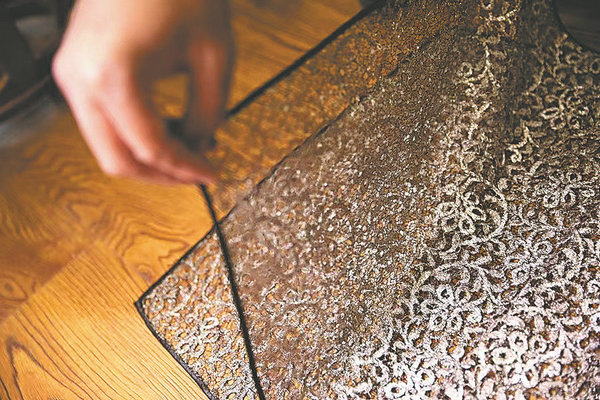

Devotion to craft
He also picked up cloth-making techniques.
"The master tailors understood the structure of tailoring very well, and I learned and practiced by their side every day," Jin recalls.
He came to realize that it might be relatively easy to learn all the techniques, but it takes a long time to get them down to a fine art.
"I was impressed by their (master tailors') serious attitude and striving for precision," Jin says.
"They focus on every detail and make sure it's done perfectly."
In 2010, Jin was able to independently craft qipao, and his first work was a light beige dress with black flowers.
"It was for my wife, and she loved it," Jin says.
The success fueled his passion to continue to study and hone his skills.
The qipao in Suzhou varies from its counterparts in Shanghai, in terms of cloth choice and patterns, because of the differences in local culture.
Shanghai-styled qipao highlights layered color schemes on the edges, but the Suzhou-styled tends to use just one color, he explains.
"Even the delicate embroidery is done with thread that matches the color of the fabric," Jin says.
"The distinguishing feature of the traditional Suzhou-styled qipao is that it may not look particularly special from afar, but upon closer inspection, one can spot delicately embroidered flowers on the collar or hem, which gives off an air of sophistication and reflects the reserved nature of Suzhou people."
Yet, the technique is almost the same.
"We are sticking to the traditional methods popular in the period from the 1910s to the 1940s," Jin says.